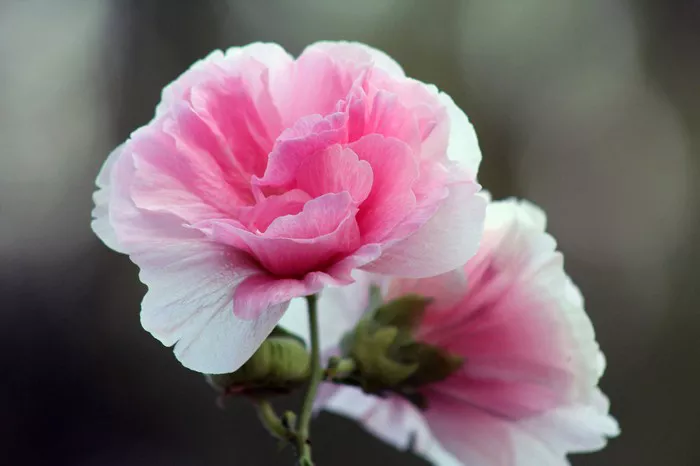Hibiscus flowers, with their vibrant colors and delicate petals, are a beloved addition to gardens and floral arrangements. However, their beauty is often short-lived, as fresh flowers tend to wilt and fade relatively quickly. Fortunately, there are several methods available for preserving hibiscus flowers, allowing you to enjoy their splendor for much longer. In this guide, we’ll explore various techniques and tips for preserving hibiscus flowers effectively.
Understanding Hibiscus Flowers
Before delving into preservation methods, it’s essential to understand the structure and characteristics of hibiscus flowers. Hibiscus, belonging to the Malvaceae family, encompasses hundreds of species, with diverse colors, sizes, and shapes of flowers. Commonly recognized for their large, showy blooms, hibiscus flowers typically feature five petals surrounding a prominent central stamen. These flowers may appear in shades of red, pink, yellow, white, or orange, adding a burst of color to any landscape or floral arrangement.
Hibiscus flowers are known for their ephemeral nature, often lasting only a few days after blooming. Factors such as temperature, humidity, and sunlight exposure can accelerate their wilting process. To preserve hibiscus flowers successfully, it’s crucial to employ techniques that maintain their natural color, form, and texture while preventing decay.
Preservation Techniques
1. Air Drying:
Air drying is one of the simplest and most popular methods for preserving hibiscus flowers. To begin, select fresh blooms with vibrant colors and undamaged petals. Remove any excess foliage from the stems, leaving only the flowers intact. Next, bundle the flowers together using a string or rubber band, ensuring they are evenly spaced and not overcrowded.
Hang the bundled flowers upside down in a dry, well-ventilated area away from direct sunlight. The drying process may take one to two weeks, depending on environmental conditions and the thickness of the flower petals. Once fully dried, the hibiscus flowers will retain their shape and color, making them ideal for decorative purposes or crafting projects.
2. Pressing:
Pressing hibiscus flowers is another method for preserving their natural beauty. This technique involves flattening the flowers between absorbent materials to remove moisture and retain their form. To press hibiscus flowers, place them between layers of blotting paper or parchment paper within the pages of a heavy book or flower press.
Stack additional books or add weight to the flower press to apply gentle pressure evenly. Allow the flowers to remain pressed for two to four weeks, periodically replacing the blotting paper to facilitate moisture absorption. Once fully dried, the pressed hibiscus flowers can be used for various purposes, including crafting, scrapbooking, or framed artwork.
3. Silica Gel Drying:
Silica gel drying is a more advanced preservation method that allows for quicker drying while maintaining the color and shape of hibiscus flowers. Silica gel, a desiccant material capable of absorbing moisture rapidly, is readily available at craft stores or online retailers. To preserve hibiscus flowers using silica gel, begin by pouring a layer of silica gel into a container with an airtight seal.
Gently place the hibiscus flowers on top of the silica gel, ensuring they are not touching each other. Carefully cover the flowers with additional silica gel, ensuring they are fully submerged. Seal the container tightly and allow the flowers to remain undisturbed for three to five days, depending on their size and thickness.
Once the drying period is complete, carefully remove the hibiscus flowers from the silica gel and brush off any excess powder using a soft brush. The preserved flowers will maintain their vibrant colors and natural appearance, making them suitable for various decorative purposes.
4. Glycerin Preservation:
Glycerin preservation is a technique that involves replacing the natural moisture in hibiscus flowers with glycerin, resulting in pliable and long-lasting blooms. To begin, prepare a solution consisting of one part glycerin to two parts warm water. Trim the stems of freshly cut hibiscus flowers at an angle and place them in a container filled with the glycerin solution.
Ensure that the stems are submerged in the solution and leave the flowers to soak for one to two weeks, or until they become pliable and saturated with glycerin. Once preserved, remove the hibiscus flowers from the solution and allow them to air dry on a flat surface. The glycerin-preserved flowers will maintain their color and flexibility, making them suitable for arrangements and floral displays.
Tips for Successful Preservation
1. Choose Fresh Flowers: Select hibiscus flowers that are freshly bloomed and free from blemishes or signs of decay for optimal preservation results.
2. Timing is Key: Preserve hibiscus flowers soon after they reach full bloom to capture their peak freshness and color vibrancy.
3. Handle with Care: Handle hibiscus flowers gently to avoid damaging the delicate petals and structures during the preservation process.
4. Control Environmental Factors: Maintain a stable environment with moderate temperature and humidity levels to facilitate the preservation process and prevent mold or decay.
5. Experiment and Adapt: Explore different preservation methods and techniques to find the one that best suits your preferences and desired outcomes.
Conclusion
Preserving hibiscus flowers allows you to enjoy their beauty and charm long after they have bloomed in the garden. Whether you prefer air drying, pressing, silica gel drying, or glycerin preservation, there are various techniques available to suit your needs and preferences. By following proper methods and tips for preservation, you can extend the lifespan of hibiscus flowers while retaining their vibrant colors and natural elegance. So, go ahead and embark on the journey of preserving hibiscus flowers to adorn your home or craft creative floral arrangements that capture the essence of nature’s splendor.


